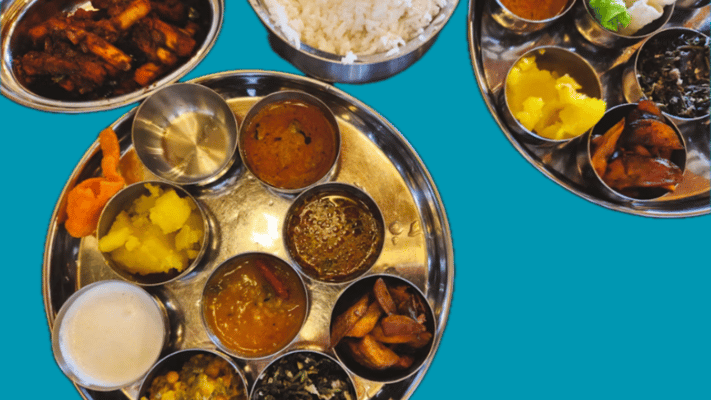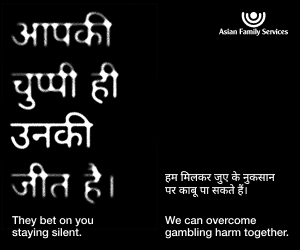Divine Flavours From Puri

As the towering chariots of Lord Jagannath, Balabhadra and Subhadra majestically roll through the bustling streets of Puri during the ongoing Rath Yatra, the world bears witness to a festival that blends spiritual fervor, timeless tradition, and above all, a powerful culture of community and compassion through food. At the core of this divine procession lies the sacred kitchen of the Jagannath Temple, a marvel of scale and sanctity, where more than 56 traditional dishes—collectively known as Chappan Bhog—are prepared daily in earthen pots using firewood. This kitchen, revered as the largest temple kitchen in the world, feeds tens of thousands of pilgrims daily, and even lakhs during festivals, maintaining a seamless flow of food prepared with devotion, precision, and an unshakeable spiritual discipline.
But what makes this event and many others like it across India, so profound is not just the food—it is the spirit of shared humanity. In Puri, rich and poor, locals and foreigners, all sit together to partake in Mahaprasad, which is not merely nourishment, but a divine offering imbued with inclusiveness. This unique model of community cooking, rooted in India’s ancient culture, reflects a deeper value system: that food is sacred, and feeding others is the highest form of service.
This spirit is not unique to Puri. Across India, sacred kitchens and community food halls nourish millions, carrying forward a heritage where cooking is not an individual act, but a communal ritual of love, equality, and devotion. At the Golden Temple in Amritsar, the Guru Ka Langar serves over 100,000 meals daily—free of cost and without discrimination. Here, volunteers from all walks of life come together to chop vegetables, roll rotis, stir cauldrons of dal, and wash utensils—not as servers and guests, but as equals. The image of strangers sitting side-by-side in rows, sharing the same meal, reminds us that in India, unity is not just preached—it is plated.
At the Tirupati Balaji Temple in Andhra Pradesh, Annadanam (the offering of food) is conducted on an enormous scale, feeding up to 200,000 people daily during festivals. Meals here are cooked using satvik principles, focusing on purity and balance. In Shirdi, the Prasadalaya offers hot vegetarian meals to thousands of devotees daily, while ISKCON temples, notably in Hubli and Mayapur, run massive kitchens that feed both pilgrims and underprivileged schoolchildren as part of their outreach programs.
Even in the rugged Himalayan terrain of Vaishno Devi, where the trek is steep and long, langars and food stations supported by volunteers serve piping hot meals—free of cost—to weary pilgrims. And during the Amarnath Yatra, temporary food camps are set up by charitable organizations and religious trusts to serve rice, dal, vegetables, and sweets to lakhs of yatris braving the harsh terrain.
Each of these sacred sites upholds the Indian tradition of “Atithi Devo Bhava” (Guest is God) not just in words, but through warm plates, compassionate service, and an open heart. These kitchens are temples within temples, where food is the offering and every visitor is the deity.
Beyond the temples, the idea of community cooking also extends to festivals, village celebrations, weddings, and even times of grief, where families, neighbors, and volunteers come together to cook in large batches. The sharing of meals in banana leaves, steel thalis, or earthenware—not only fills the stomach but forges emotional bonds. The recipes passed down through generations, the spice blends perfected over centuries, and the methods of slow cooking all come together to create a culinary identity that is as diverse as it is unifying.
In today’s world, where individualism and commercialism often take precedence over community and tradition, India’s sacred kitchens stand as living institutions of inclusivity, service, and spiritual harmony. They remind us that food, when cooked collectively and served selflessly, becomes a tool for social equality, cultural preservation, and human connection.
As a hospitality educator and culinary researcher, I believe the world has much to learn from India’s sacred food culture—where cooking is not an act of ego, but an expression of empathy; where a shared meal is not just tradition, but transformation. During this JagannathRath Yatra, as the sacred Mahaprasad flows out of the Puri temple kitchens into the hands of lakhs of devotees, we are reminded that the greatest journeys—spiritual or otherwise—are best undertaken not alone, but together, with a shared meal and an open heart.
In every ladle of dal, every roti rolled, and every grain of rice offered with folded hands, India tells the world: We cook not just to feed, but to connect. We serve not just food, but humanity.
As the towering chariots of Lord Jagannath, Balabhadra and Subhadra majestically roll through the bustling streets of Puri during the ongoing RathYatra, the world bears witness to a festival that blends spiritual fervor, timeless tradition, and above all, a powerful culture of community and...
As the towering chariots of Lord Jagannath, Balabhadra and Subhadra majestically roll through the bustling streets of Puri during the ongoing Rath Yatra, the world bears witness to a festival that blends spiritual fervor, timeless tradition, and above all, a powerful culture of community and compassion through food. At the core of this divine procession lies the sacred kitchen of the Jagannath Temple, a marvel of scale and sanctity, where more than 56 traditional dishes—collectively known as Chappan Bhog—are prepared daily in earthen pots using firewood. This kitchen, revered as the largest temple kitchen in the world, feeds tens of thousands of pilgrims daily, and even lakhs during festivals, maintaining a seamless flow of food prepared with devotion, precision, and an unshakeable spiritual discipline.
But what makes this event and many others like it across India, so profound is not just the food—it is the spirit of shared humanity. In Puri, rich and poor, locals and foreigners, all sit together to partake in Mahaprasad, which is not merely nourishment, but a divine offering imbued with inclusiveness. This unique model of community cooking, rooted in India’s ancient culture, reflects a deeper value system: that food is sacred, and feeding others is the highest form of service.
This spirit is not unique to Puri. Across India, sacred kitchens and community food halls nourish millions, carrying forward a heritage where cooking is not an individual act, but a communal ritual of love, equality, and devotion. At the Golden Temple in Amritsar, the Guru Ka Langar serves over 100,000 meals daily—free of cost and without discrimination. Here, volunteers from all walks of life come together to chop vegetables, roll rotis, stir cauldrons of dal, and wash utensils—not as servers and guests, but as equals. The image of strangers sitting side-by-side in rows, sharing the same meal, reminds us that in India, unity is not just preached—it is plated.
At the Tirupati Balaji Temple in Andhra Pradesh, Annadanam (the offering of food) is conducted on an enormous scale, feeding up to 200,000 people daily during festivals. Meals here are cooked using satvik principles, focusing on purity and balance. In Shirdi, the Prasadalaya offers hot vegetarian meals to thousands of devotees daily, while ISKCON temples, notably in Hubli and Mayapur, run massive kitchens that feed both pilgrims and underprivileged schoolchildren as part of their outreach programs.
Even in the rugged Himalayan terrain of Vaishno Devi, where the trek is steep and long, langars and food stations supported by volunteers serve piping hot meals—free of cost—to weary pilgrims. And during the Amarnath Yatra, temporary food camps are set up by charitable organizations and religious trusts to serve rice, dal, vegetables, and sweets to lakhs of yatris braving the harsh terrain.
Each of these sacred sites upholds the Indian tradition of “Atithi Devo Bhava” (Guest is God) not just in words, but through warm plates, compassionate service, and an open heart. These kitchens are temples within temples, where food is the offering and every visitor is the deity.
Beyond the temples, the idea of community cooking also extends to festivals, village celebrations, weddings, and even times of grief, where families, neighbors, and volunteers come together to cook in large batches. The sharing of meals in banana leaves, steel thalis, or earthenware—not only fills the stomach but forges emotional bonds. The recipes passed down through generations, the spice blends perfected over centuries, and the methods of slow cooking all come together to create a culinary identity that is as diverse as it is unifying.
In today’s world, where individualism and commercialism often take precedence over community and tradition, India’s sacred kitchens stand as living institutions of inclusivity, service, and spiritual harmony. They remind us that food, when cooked collectively and served selflessly, becomes a tool for social equality, cultural preservation, and human connection.
As a hospitality educator and culinary researcher, I believe the world has much to learn from India’s sacred food culture—where cooking is not an act of ego, but an expression of empathy; where a shared meal is not just tradition, but transformation. During this JagannathRath Yatra, as the sacred Mahaprasad flows out of the Puri temple kitchens into the hands of lakhs of devotees, we are reminded that the greatest journeys—spiritual or otherwise—are best undertaken not alone, but together, with a shared meal and an open heart.
In every ladle of dal, every roti rolled, and every grain of rice offered with folded hands, India tells the world: We cook not just to feed, but to connect. We serve not just food, but humanity.










Leave a Comment